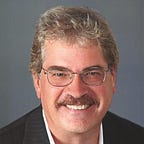Our Joe
The Story of Joe Hauser — the Unknown Home Run King of Baseball
Even his nickname was obscure and hard to decipher.
But when it came to the baseball career of Joe “Unser Choe” Hauser, it may have been the perfect moniker after all. One that aligned well with a fan-favorite who flirted with greatness but remains to this day all but unrecognizable by the history-loving fans of the game.
Born in Milwaukee in 1899, Hauser was playing first base for the minor league Milwaukee Brewers in 1920 and the hometown fans quickly took a liking to him. Showing loyalty to one of their own they started calling the affable first-baseman “Unser Choe” (‘Our Joe’ in German). Don’t nobody dare boo him, they’d say. That’s Our Joe.
While ‘Our Joe’ went on to the Major Leagues and put up impressive numbers for the Philadelphia Athletics and Cleveland Indians from 1922 to 1929, it’s what he did in the minors that warrants a closer look.
From a fan’s viewpoint, no sport is measured and weighed by numbers more than baseball. Yet few, if any, know that Joe Hauser was the first man in baseball to hit more than 60 home runs in a single season. Not Ruth or Gehrig. Not Hack Wilson or Josh Gibson.
Joe Hauser — the unknown home run king of baseball.
Solidly built at 5’10” and 175 pounds, he stood tall at the plate and quickly developed a powerful but compact swing. The left-hander was on his way to major league stardom in 1924 when he hit 27 home runs and drove in 115 runs for Connie Mack’s Philadelphia A’s.
The future was looking bright until he shattered his kneecap the next year in spring training. Sports medicine being what it was in those days, he had to sit out most of the next two seasons recovering.
Then in 1928, as Hauser later told the story, batting advice from none other than Ty Cobb robbed him of more success. Cobb, perhaps the greatest pure hitter the game has ever known, was playing out the end of his career with the A’s and he took it upon himself to teach Hauser a few things about hitting a baseball.
“Cobb had told me during spring training that he would help me with my hitting when we got up north,” Hauser recalled. “About 35 to 40 games into the season, he started getting on my back to crowd the plate. I had to nearly hit the ball with my elbows, and I could not hit like that.” 1
Hauser’s numbers in the big leagues started to decline and soon he was back in the minors, this time to stay. However, that was hardly the end for Joe Hauser. As a member of the minor league Baltimore Orioles in 1930, he became the first player in organized baseball to hit 63 home runs in a single season (Babe Ruth topped out at 60 home runs in 1927).
In 1933 Joe was sold to the American Association’s Minneapolis Millers where he had what can only be described as a dream season. He set a new minor league record when he slammed 69 homers in 153 games, along with a .332 batting average and .770 slugging percentage.
(He remained the only professional baseball player to hit 60 or more home runs in two seasons until Mark McGwire and Sammy Sosa did so in 1998 and 1999.)
(For a little historical perspective, he remained the only professional player to hit 60 or more home runs twice until Mark McGwire and Sammy Sosa did so in 1998 and 1999.)
But time and injury took its inevitable toll and the Major Leagues no longer showed any interest in Joe. Another knee injury during the 1934 season effectively ended any chance for further glory.
In another time and place the man would have been the hottest commodity around. That was simply not his fate.
Joe Hauser played his final baseball game in 1942 for the Sheboygan Indians of the Wisconsin State League, then managed the team for eight more years. Upon retirement from the game, he stayed close to home, operating a sporting goods store in Sheboygan. There he quietly lived the rest of his days, passing away in 1997 and being laid to rest next to his wife Irene in Calvary Cemetery.
Once and for always Unser Choe.
1 On To Nicollet — The Glory and Fame of the Minneapolis Millers by Stew Thornley (Nodin Press, 1988), p. 36.
